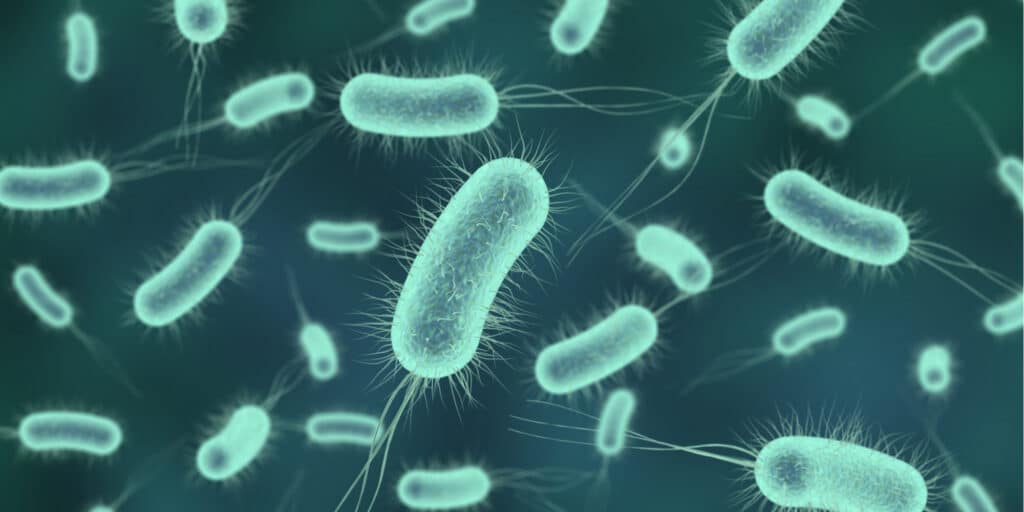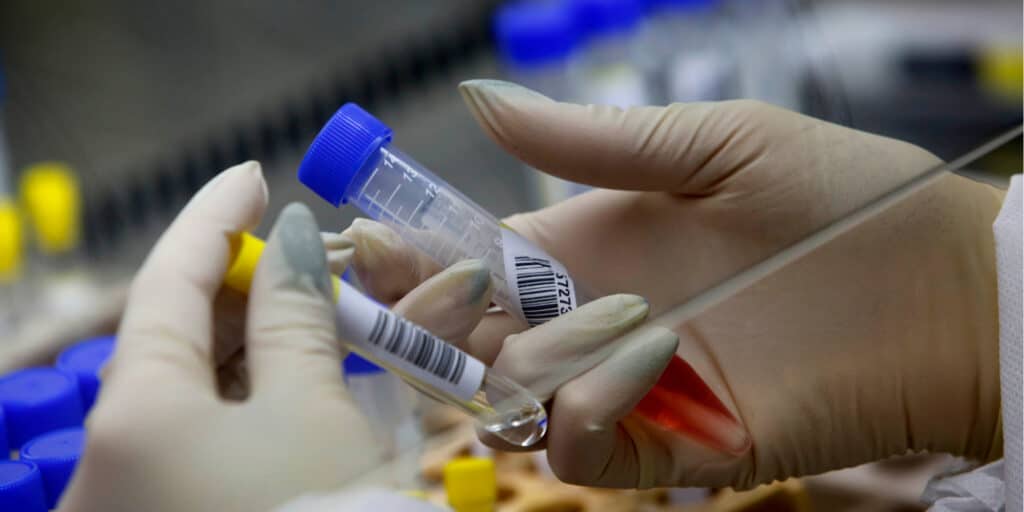A recent study has uncovered evidence that dangerous mutations of a superbug can spread from pigs to humans. The study, led by Dr. Semeh Bejaoui and Dorte Frees of Copenhagen University and Soren Persson at Denmark’s Statens Serum Institute, was presented this weekend at this year’s European Congress of Clinical Microbiology & Infectious Diseases (ECCMID) in Lisbon, Portugal (23-26 April). In particular, the study examined samples of the superbug Clostridioides difficile (C. difficile) across 14 different pig farms in Denmark.
“Our finding indicates that C difficile is a reservoir of antimicrobial resistance genes that can be exchanged between animals and humans,” said Bejaoui, who is due to present her study at the European Congress of Clinical Microbiology & Infectious Diseases in Lisbon on Sunday. “This alarming discovery suggests that resistance to antibiotics can spread more widely than previously thought, and confirms links in the resistance chain leading from farm animals to humans.”
To better understand this study’s findings, it’s important to understand what C. difficile is, and why this superbug in particular is of concern to scientists around the world.
What Is This Superbug?

C. difficile is a bacterium that causes gut infection in humans, causing symptoms such as diarrhea and inflammation of the colon, both of which can be deadly in elderly patients or those in hospital settings. C. difficile is resistant to all but three antibiotics in use today, making it one of the biggest antibiotic-resistant threats in developed countries. In the United States alone, the bacterium was responsible for an estimated 223,900 infections and 12,800 deaths in 2017, and cost the healthcare system more than $1 billion.
Doctors and scientists alike have warned for years that over-prescribing antibiotics for trivial complaints or infections caused by viruses that do not respond to antibiotics could lead to the spread of resistance to this critically important class of drugs.
Furthermore, researchers say that this problem is being intensified by the widespread use of antibiotics on farms where they are given to animals, most often to pigs, to keep them in poorer conditions. While this ability to keep animals in poor conditions may save a company’s bottom dollar, it is in these conditions that diseases spread and mutate more easily.
The result has been a rapid increase in antimicrobial resistance around the world. Drugs that were once effective at treating common infections are now less able to do so, which is a danger to global health.
“Antimicrobial resistance is on the rise in Europe and elsewhere in the world,” said former World Health Organization (WHO) director-general Margaret Chan. “We are losing our first-line antimicrobials. Replacement treatments are more costly, more toxic, need much longer durations of treatment, and may require treatment in intensive care units.”
Why the Study Matters
It’s estimated that about 750,000 people die every year as a result of drug-resistant infections. Experts fear that by 2050, that number could reach as high as 10 million, and cost more than $100 trillion to global healthcare costs.
It is these fears that have led to the worldwide pressure being put on doctors to limit the prescription of antibiotics. However, experts have pointed out that the overwhelming majority of antibiotics are not given to humans, but rather are used as agricultural additives. In this setting, antibiotics are used to stave off illnesses and infections in animals that are being kept in conditions that would otherwise cause disease.
C. difficile lives in many people’s intestines as part of the regular balance of the digestive system, but its growth is normally kept in check by other bacteria. However, the dangerous side of this bacterium becomes clear when someone uses antibiotics.
When a person takes antibiotics, most likely to deal with an infection, it can destroy some of the “good” bacteria found in the gut along with the infection it was targeting. Since C. difficile is resistant to most antibiotics, when this happens, and the balance of the intestinal system is thrown off, it can grow out of control and begin to attack the lining of the intestines. Having recently taken antibiotics is the biggest risk factor for developing inflammation or infection caused by C. difficile.
More About the Study

In their research, Bejaoui focused her attention on the prevalence of C. difficile in farm animals, specifically pigs. Pigs from various farms in Denmark were studied, and their results were compared with isolated samples from Danish hospital patients to see if there was a match. Samples were screened for the presence of C difficile and genetic sequencing was used to identify whether they harbored toxin and drug resistance genes.
Bejaoui and her colleagues examined stool samples from 514 pigs, all of which were collected in 2020 and 2021, and found that 54 had C. difficile. They then used genetic sequencing to isolate strains that had an increased amount of toxin-producing and drug-resistant genes. All of the samples from the 54 pigs had the toxin-producing genes.
Next, they compared their results with 934 samples from human patients who had been diagnosed with a C. difficile infection during that period.
13 sequence types came up as a match between the pig and human samples, with an animal-associated strain, ST11, being the most common. In 16 cases, the ST11 strain was identical in both humans and pigs. Out of the 54 pig samples, 38 had at least one gene resistant to antibiotics, and in general, the resistance applied to a class of antibiotics that are commonly used to treat severe bacterial infections.
“We found that the strains isolated in pigs were genetically identical to the ones found in humans over the same period,” Bejaoui said. “We have still to show that the strains were passed from pigs to humans but what our study does make clear is that farms that use antibiotics are creating conditions which allow resistant strains to flourish and these will ultimately infect humans.”
“Of particular concern is the large reservoir of genes conferring resistance to aminoglycosides, a class of antibiotics to which C. difficile is intrinsically resistant. It thus plays a role in spreading these genes to other susceptible species. This study provides more evidence on the evolutionary pressure connected with the use of antimicrobials in animal husbandry, which selects for dangerously resistant human pathogens.”
What Does This Mean?
Researchers involved in this study believe that the widespread use of antibiotics in farm animals is having an unintended side effect: the production of more hypervirulent strains of bacterium like C. difficile. They theorize that this could make certain bacteria, like C. difficile, capable of jumping from animals to humans through zoonotic transmission.
“The overuse of antibiotics in human medicine and as cheap production tools on farms is undoing our ability to cure bacterial infections,” Bejaoui said.
This is not the first time scientists have warned of such a danger. In August of 2021, the United Nations (UN) put out a joint statement with the Global Leaders Group on Antimicrobial Resistance calling for a significant reduction of antimicrobials in food production and farm animals. The statement warned that “the world is rapidly heading towards a tipping point where the antimicrobials relied on to treat infections in humans, animals and plants will no longer be effective.”
While stopping zoonotic transmission is a constant, complex battle, what is clear is that the widespread, overuse of antibiotics on animals is affecting humans. Solving this problem may not be as simple as halting the use of these antibiotics, but limiting their use may be the first step.
While the early findings of this study are promising, Bejaoui says it was not without its limitations. She explains, “The fact that some of the strains in both human and animal isolates were identical suggests that they could be shared between groups, but until we perform deeper phylogenetic analyses we cannot determine the direction of the transmission, which could also be bidirectional, with the bacteria being continuously exchanged and expanded in the community and farms.”
Have You Heard of This Superbug That Can Jump From Pigs to Humans?


Hmm I sure haven’t heard of this until now-interesting! Thank you! It sounds like yet another reason to support Revivicor and their Gal-Safe pigs!- they no doubt are kept under lock and key and treated like the Swine Kings they are! The genetic material we share, humans/pigs is astounding and a portion of the reason why the recent heart transplant trial was a golden Gal-Safe pig. Really it shouldn’t be too surprising that any disease could be transmitted to any fellow mammal. Dogs/cats get colds etc. The antibiotic resistance portion is horrifying and could easily trickle down to the FDAs lax and disgusting allowances in our foods. They know the filthy wallows the average farm pigs come from, test and accept the levels of hormones, bacteria etc. Dunno, Alpha-Gal allergy or not I still want a dang juicy pork chop LOL
Probably the reason not to eat